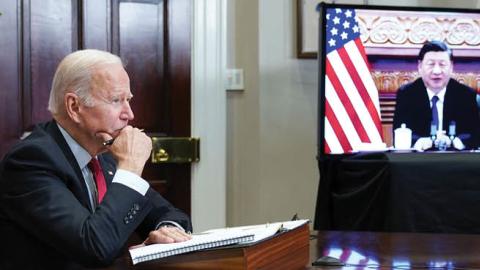Last week Russian troops fanned out across Kazakhstan; the Myanmar junta sentenced Aung San Suu Kyi to four more years in prison; and China transferred a senior official from Xinjiang to lead the People’s Liberation Army’s garrison in Hong Kong. Two things are clear. First, America’s geopolitical adversaries aren’t impressed by the Biden administration. Second, the administration’s attempts to make a priority of human rights and democracy have so far failed to reverse or even to slow the retreat of democracy around the world.
The Biden administration’s political fragility at home is partly to blame. But adversaries are watching more than American domestic politics; they see incoherence in American policy. The administration has signaled that balancing China in the Indo-Pacific, the promotion of democracy and climate policy are its overriding foreign-policy priorities. Our adversaries—and some of our friends—think that these goals can’t be pursued successfully at the same time. They conclude that American policy focused on incompatible objectives will ultimately fail.
Take Asia. There is no way to counter China’s regional ambitions without solidifying the American position in Southeast Asia. Yet here President Biden’s prime geopolitical goal of balancing China runs counter to his goal of democracy promotion. So far, there aren’t many signs that the administration is handling this tension effectively.
Read the full article in the Wall Street Journal


















